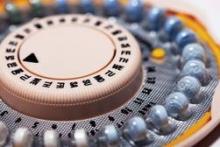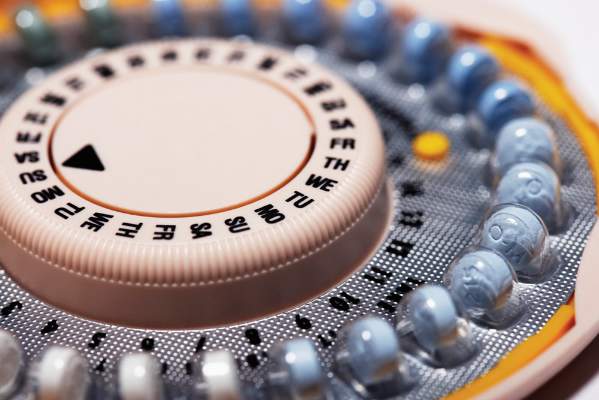User login
Adolescents’ unsupervised time with peers correlated with substance use
Adolescents’ unsupervised time with peers and participation in sports were significantly associated with substance use at the end of high school, according to a study.
The researchers examined longitudinal data on 766 adolescents from 10 locations across the United States. All of the research subjects’ participation in out-of-school time (OST) activities (unsupervised time with peers, sports, and other organized activities, such as band; and paid employment) and use of alcohol, marijuana, and tobacco were measured when they were 15 years old and when they were finishing high school.
More unsupervised time was correlated with higher amounts of all three types of substance use the researchers examined; for cigarette use (r = 0.19), for alcohol use (r = 0.23), and for marijuana use (r = 0.24). More involvement in paid employment also was related to higher amounts of cigarette (r = 0.10) and alcohol use (r = 0.08), but not marijuana use. More participation in sports was positively correlated only with more alcohol use (r = 0.10). In fact, greater participation in sports actually was associated with lower amounts of cigarette (r = –0.17) and marijuana use (r = –0.08).
“Consistent with predictions of Routine Activity Theory and with prior empirical research, more unsupervised time with peers was found to increase both the odds and amount of substance use reported by adolescents at the end of high school,” according to Kenneth T.H. Lee and Deborah Lowe Vandell, Ph.D., of the University of California, Irvine. “That these relations were found, even when time in other OST contexts were controlled, suggests that lack of adult supervision, the presence of peers, and minimal structure are important processes for influencing substance use in adolescence. Other forms of OST also appeared to be linked to substance use in adolescence, suggesting that these relations were not simply artifacts of a confounding with unsupervised time.”
Among this study’s unique findings are that participation in sports appeared to be a protective factor for marijuana and tobacco use, and that participation in other organized activities did not seem to play a significant protective role against substance use, according to the researchers.
Areas that were not addressed in this study include the amount of participation in different types of OST non-sports, organized activities, and paid employment, and the efficacy of reducing the amount of unsupervised time that adolescents spend with peers at preventing substance use and abuse.
Read the full study in the Journal of Adolescent Health (doi: 10.1016/j.jadohealth.2015.07.003).
Adolescents’ unsupervised time with peers and participation in sports were significantly associated with substance use at the end of high school, according to a study.
The researchers examined longitudinal data on 766 adolescents from 10 locations across the United States. All of the research subjects’ participation in out-of-school time (OST) activities (unsupervised time with peers, sports, and other organized activities, such as band; and paid employment) and use of alcohol, marijuana, and tobacco were measured when they were 15 years old and when they were finishing high school.
More unsupervised time was correlated with higher amounts of all three types of substance use the researchers examined; for cigarette use (r = 0.19), for alcohol use (r = 0.23), and for marijuana use (r = 0.24). More involvement in paid employment also was related to higher amounts of cigarette (r = 0.10) and alcohol use (r = 0.08), but not marijuana use. More participation in sports was positively correlated only with more alcohol use (r = 0.10). In fact, greater participation in sports actually was associated with lower amounts of cigarette (r = –0.17) and marijuana use (r = –0.08).
“Consistent with predictions of Routine Activity Theory and with prior empirical research, more unsupervised time with peers was found to increase both the odds and amount of substance use reported by adolescents at the end of high school,” according to Kenneth T.H. Lee and Deborah Lowe Vandell, Ph.D., of the University of California, Irvine. “That these relations were found, even when time in other OST contexts were controlled, suggests that lack of adult supervision, the presence of peers, and minimal structure are important processes for influencing substance use in adolescence. Other forms of OST also appeared to be linked to substance use in adolescence, suggesting that these relations were not simply artifacts of a confounding with unsupervised time.”
Among this study’s unique findings are that participation in sports appeared to be a protective factor for marijuana and tobacco use, and that participation in other organized activities did not seem to play a significant protective role against substance use, according to the researchers.
Areas that were not addressed in this study include the amount of participation in different types of OST non-sports, organized activities, and paid employment, and the efficacy of reducing the amount of unsupervised time that adolescents spend with peers at preventing substance use and abuse.
Read the full study in the Journal of Adolescent Health (doi: 10.1016/j.jadohealth.2015.07.003).
Adolescents’ unsupervised time with peers and participation in sports were significantly associated with substance use at the end of high school, according to a study.
The researchers examined longitudinal data on 766 adolescents from 10 locations across the United States. All of the research subjects’ participation in out-of-school time (OST) activities (unsupervised time with peers, sports, and other organized activities, such as band; and paid employment) and use of alcohol, marijuana, and tobacco were measured when they were 15 years old and when they were finishing high school.
More unsupervised time was correlated with higher amounts of all three types of substance use the researchers examined; for cigarette use (r = 0.19), for alcohol use (r = 0.23), and for marijuana use (r = 0.24). More involvement in paid employment also was related to higher amounts of cigarette (r = 0.10) and alcohol use (r = 0.08), but not marijuana use. More participation in sports was positively correlated only with more alcohol use (r = 0.10). In fact, greater participation in sports actually was associated with lower amounts of cigarette (r = –0.17) and marijuana use (r = –0.08).
“Consistent with predictions of Routine Activity Theory and with prior empirical research, more unsupervised time with peers was found to increase both the odds and amount of substance use reported by adolescents at the end of high school,” according to Kenneth T.H. Lee and Deborah Lowe Vandell, Ph.D., of the University of California, Irvine. “That these relations were found, even when time in other OST contexts were controlled, suggests that lack of adult supervision, the presence of peers, and minimal structure are important processes for influencing substance use in adolescence. Other forms of OST also appeared to be linked to substance use in adolescence, suggesting that these relations were not simply artifacts of a confounding with unsupervised time.”
Among this study’s unique findings are that participation in sports appeared to be a protective factor for marijuana and tobacco use, and that participation in other organized activities did not seem to play a significant protective role against substance use, according to the researchers.
Areas that were not addressed in this study include the amount of participation in different types of OST non-sports, organized activities, and paid employment, and the efficacy of reducing the amount of unsupervised time that adolescents spend with peers at preventing substance use and abuse.
Read the full study in the Journal of Adolescent Health (doi: 10.1016/j.jadohealth.2015.07.003).
FROM THE JOURNAL OF ADOLESCENT HEALTH
Vaccine-derived polio case presents new challenges to eradication
A male immunodeficient patient excreted strains of a vaccine-derived poliovirus for 28 years, a study has found. This case suggests that there are new barriers to polio eradication, according to Glynis Dunn and coauthors of a research article published August 27 in PLoS Pathogens.
Poliovirus strains in the oral polio vaccine (OPV) can be transmitted from person to person in populations with low immunity and can cause outbreaks. The strains can also replicate for long periods of time in an immunodeficient individual. The patient in question received childhood OPV immunizations at 5, 7, and 12 months of age and a booster when he was about 7 years old. His case is the longest-known example of a vaccinated patient excreting the live poliovirus.
The researchers analyzed 185 stool samples that the patient provided between 1995 and 2015. All stools were positive for strain 2 polio virus; the virus titres shed in the stools were “comparable to virus titres shed by healthy vaccinees and paralytics cases infected with vaccine or wild poliovirus.”
The excreted virus began to diverge from the vaccine strain around the time of the individual’s last known OPV vaccination, acquiring various mutations that affected its antigenic structure.
The patient excreted “a highly virulent and antigenically modified type 2 poliovirus at high titres for a period estimated to be 28 years so far ... Provided antibody titres and immunizations coverage are maintained, it is likely that the population will be protected against paralytic disease, but it is also possible that this virus could circulate in populations only using [inactivated polio vaccine] as described in Israel for wild poliovirus, thus representing a possible source of polio reemergence,” according to the authors.
Read the full article in PLoS Pathogens (doi:10.1371/journal.ppat.1005114).
A male immunodeficient patient excreted strains of a vaccine-derived poliovirus for 28 years, a study has found. This case suggests that there are new barriers to polio eradication, according to Glynis Dunn and coauthors of a research article published August 27 in PLoS Pathogens.
Poliovirus strains in the oral polio vaccine (OPV) can be transmitted from person to person in populations with low immunity and can cause outbreaks. The strains can also replicate for long periods of time in an immunodeficient individual. The patient in question received childhood OPV immunizations at 5, 7, and 12 months of age and a booster when he was about 7 years old. His case is the longest-known example of a vaccinated patient excreting the live poliovirus.
The researchers analyzed 185 stool samples that the patient provided between 1995 and 2015. All stools were positive for strain 2 polio virus; the virus titres shed in the stools were “comparable to virus titres shed by healthy vaccinees and paralytics cases infected with vaccine or wild poliovirus.”
The excreted virus began to diverge from the vaccine strain around the time of the individual’s last known OPV vaccination, acquiring various mutations that affected its antigenic structure.
The patient excreted “a highly virulent and antigenically modified type 2 poliovirus at high titres for a period estimated to be 28 years so far ... Provided antibody titres and immunizations coverage are maintained, it is likely that the population will be protected against paralytic disease, but it is also possible that this virus could circulate in populations only using [inactivated polio vaccine] as described in Israel for wild poliovirus, thus representing a possible source of polio reemergence,” according to the authors.
Read the full article in PLoS Pathogens (doi:10.1371/journal.ppat.1005114).
A male immunodeficient patient excreted strains of a vaccine-derived poliovirus for 28 years, a study has found. This case suggests that there are new barriers to polio eradication, according to Glynis Dunn and coauthors of a research article published August 27 in PLoS Pathogens.
Poliovirus strains in the oral polio vaccine (OPV) can be transmitted from person to person in populations with low immunity and can cause outbreaks. The strains can also replicate for long periods of time in an immunodeficient individual. The patient in question received childhood OPV immunizations at 5, 7, and 12 months of age and a booster when he was about 7 years old. His case is the longest-known example of a vaccinated patient excreting the live poliovirus.
The researchers analyzed 185 stool samples that the patient provided between 1995 and 2015. All stools were positive for strain 2 polio virus; the virus titres shed in the stools were “comparable to virus titres shed by healthy vaccinees and paralytics cases infected with vaccine or wild poliovirus.”
The excreted virus began to diverge from the vaccine strain around the time of the individual’s last known OPV vaccination, acquiring various mutations that affected its antigenic structure.
The patient excreted “a highly virulent and antigenically modified type 2 poliovirus at high titres for a period estimated to be 28 years so far ... Provided antibody titres and immunizations coverage are maintained, it is likely that the population will be protected against paralytic disease, but it is also possible that this virus could circulate in populations only using [inactivated polio vaccine] as described in Israel for wild poliovirus, thus representing a possible source of polio reemergence,” according to the authors.
Read the full article in PLoS Pathogens (doi:10.1371/journal.ppat.1005114).
Metabolic dysfunction markers found in bipolar patients
Bipolar disorder patients had different levels of some of the biomarkers linked to metabolic dysfunction than healthy controls, according to a study.
The study’s participants included 57 bipolar disorder patients and a control group of 49 healthy individuals. Among the experimental group, 24 had bipolar disorder type I and the remaining 33 had bipolar disorder type II. The bipolar patients’ average duration of illness was 22 years and their average body mass index was 25.9 kg/m2. The experimental group’s ages and body mass indices were not significantly different from those of the control group.
The researchers compared the bipolar disorder patients’ and control group’s average levels of the biomarkers: C-peptide, ghrelin, glucose-dependent insulinotropic peptide (GIP), glucagonlike peptide-1 (GLP-1), glucagon, insulin, leptin, plasminogen activator inhibitor-1 (PAI-1, total), resistin, and visfatin.
Bipolar disorder patients has significantly lower levels of ghrelin, glucagon, and GLP-1 (P = .018 for ghrelin; P less than .0001 for glucagon; P less than .0001 for GLP-1), and significantly higher levels of GIP than did controls (P less than .0001).
When the bipolar I patients’ biomarker levels were compared with those of the bipolar II patients, no significant differences were found.
Additional findings included negative correlations between a patient’s level of glucagon and numbers of previous manic (r = –0.480; P less than .001), depressive (r = –0.294; P = .026), and any mood episodes (r = –0.403; P = .002). GLP-1 levels also were negatively correlated with the numbers of manic (r = –0.322; P = .015) and any mood episodes (r = –0.274 ; P = .039) experienced by a patient.
“Our findings support the hypothesis that dysregulations in serum glucagon, GLP-1, GIP, and ghrelin might be involved in [bipolar disorder] pathogenesis, particularly in the depressed phase. Moreover, the correlation of glucagon and GLP-1 alterations with number of mood episode recurrences could contribute to the identification of late-stage” bipolar disorder patients, according to Gianluca Rosso, Ph.D., of the University of Torino, Italy, and his colleagues. “Studies in larger samples are needed to confirm these data and to further investigate the common mechanism between mood and metabolic disorders.”
Read the full article here: (J Affect Disord. 2015 Sept 15;184:293-8.)
Bipolar disorder patients had different levels of some of the biomarkers linked to metabolic dysfunction than healthy controls, according to a study.
The study’s participants included 57 bipolar disorder patients and a control group of 49 healthy individuals. Among the experimental group, 24 had bipolar disorder type I and the remaining 33 had bipolar disorder type II. The bipolar patients’ average duration of illness was 22 years and their average body mass index was 25.9 kg/m2. The experimental group’s ages and body mass indices were not significantly different from those of the control group.
The researchers compared the bipolar disorder patients’ and control group’s average levels of the biomarkers: C-peptide, ghrelin, glucose-dependent insulinotropic peptide (GIP), glucagonlike peptide-1 (GLP-1), glucagon, insulin, leptin, plasminogen activator inhibitor-1 (PAI-1, total), resistin, and visfatin.
Bipolar disorder patients has significantly lower levels of ghrelin, glucagon, and GLP-1 (P = .018 for ghrelin; P less than .0001 for glucagon; P less than .0001 for GLP-1), and significantly higher levels of GIP than did controls (P less than .0001).
When the bipolar I patients’ biomarker levels were compared with those of the bipolar II patients, no significant differences were found.
Additional findings included negative correlations between a patient’s level of glucagon and numbers of previous manic (r = –0.480; P less than .001), depressive (r = –0.294; P = .026), and any mood episodes (r = –0.403; P = .002). GLP-1 levels also were negatively correlated with the numbers of manic (r = –0.322; P = .015) and any mood episodes (r = –0.274 ; P = .039) experienced by a patient.
“Our findings support the hypothesis that dysregulations in serum glucagon, GLP-1, GIP, and ghrelin might be involved in [bipolar disorder] pathogenesis, particularly in the depressed phase. Moreover, the correlation of glucagon and GLP-1 alterations with number of mood episode recurrences could contribute to the identification of late-stage” bipolar disorder patients, according to Gianluca Rosso, Ph.D., of the University of Torino, Italy, and his colleagues. “Studies in larger samples are needed to confirm these data and to further investigate the common mechanism between mood and metabolic disorders.”
Read the full article here: (J Affect Disord. 2015 Sept 15;184:293-8.)
Bipolar disorder patients had different levels of some of the biomarkers linked to metabolic dysfunction than healthy controls, according to a study.
The study’s participants included 57 bipolar disorder patients and a control group of 49 healthy individuals. Among the experimental group, 24 had bipolar disorder type I and the remaining 33 had bipolar disorder type II. The bipolar patients’ average duration of illness was 22 years and their average body mass index was 25.9 kg/m2. The experimental group’s ages and body mass indices were not significantly different from those of the control group.
The researchers compared the bipolar disorder patients’ and control group’s average levels of the biomarkers: C-peptide, ghrelin, glucose-dependent insulinotropic peptide (GIP), glucagonlike peptide-1 (GLP-1), glucagon, insulin, leptin, plasminogen activator inhibitor-1 (PAI-1, total), resistin, and visfatin.
Bipolar disorder patients has significantly lower levels of ghrelin, glucagon, and GLP-1 (P = .018 for ghrelin; P less than .0001 for glucagon; P less than .0001 for GLP-1), and significantly higher levels of GIP than did controls (P less than .0001).
When the bipolar I patients’ biomarker levels were compared with those of the bipolar II patients, no significant differences were found.
Additional findings included negative correlations between a patient’s level of glucagon and numbers of previous manic (r = –0.480; P less than .001), depressive (r = –0.294; P = .026), and any mood episodes (r = –0.403; P = .002). GLP-1 levels also were negatively correlated with the numbers of manic (r = –0.322; P = .015) and any mood episodes (r = –0.274 ; P = .039) experienced by a patient.
“Our findings support the hypothesis that dysregulations in serum glucagon, GLP-1, GIP, and ghrelin might be involved in [bipolar disorder] pathogenesis, particularly in the depressed phase. Moreover, the correlation of glucagon and GLP-1 alterations with number of mood episode recurrences could contribute to the identification of late-stage” bipolar disorder patients, according to Gianluca Rosso, Ph.D., of the University of Torino, Italy, and his colleagues. “Studies in larger samples are needed to confirm these data and to further investigate the common mechanism between mood and metabolic disorders.”
Read the full article here: (J Affect Disord. 2015 Sept 15;184:293-8.)
FROM JOURNAL OF AFFECTIVE DISORDERS
OCs may ease inflammatory arthritis severity
Oral contraceptive use may improve symptoms of inflammatory arthritis in women, according to a cohort study conducted in Germany between 2010 and 2013.
The researchers analyzed reports on 273 18- to 60-year-old women who had arthritis for fewer than 6 months, from both a rheumatologist and the patients. The rheumatologist followed patients for 24 months, conducting standardized assessments at 0, 3, 6, 12, 18, and 24 months. Patients reported outcomes at 0, 6, 12, and 24 months.
Of the patients studied, 50 (18%) had never used OCs, 170 (62%) had used OCs in the past, and 53 (19%) used OCs at the time of the study.
Inflammatory arthritis patients who were taking OCs at the time of the study or had previously taken OCs reported better outcomes within the first 2 years of disease, compared with patients who had never used OCs.
After adjustment for age, education, and body mass index, current or previous OC use was associated with better scores on the patient-reported Rheumatoid Arthritis Impact of Disease Score (RAID), Profile of Mood and Discomfort (PROFAD), Rheumatoid Arthritis Disease Activity Index (RADAI), and Hannover Functional Assessment (FFbH) at 12 months (P less than .05). In addition, over 2 years, average RAID scores were significantly better in women who had used or were using OCs (P less than .001).
Although better disease activity scores “seemed to be associated with the use of OCs, the parameters of active inflammation were not,” noted Dr. Katinka Albrecht of German Rheumatism Research Centre, Berlin, and her colleagues.
“The positive effects of past or current OC use on patient-reported outcomes within the first 2 years after the onset of inflammatory arthritis may be explained by long-lasting programming of [central nervous system] function,” but further research is needed to confirm this,” the researchers concluded.
The study was sponsored by a grant from Pfizer. The authors declared no conflicts of interest. Read the full study in Arthritis Care & Research (doi: 10.1002/acr.22667).
Oral contraceptive use may improve symptoms of inflammatory arthritis in women, according to a cohort study conducted in Germany between 2010 and 2013.
The researchers analyzed reports on 273 18- to 60-year-old women who had arthritis for fewer than 6 months, from both a rheumatologist and the patients. The rheumatologist followed patients for 24 months, conducting standardized assessments at 0, 3, 6, 12, 18, and 24 months. Patients reported outcomes at 0, 6, 12, and 24 months.
Of the patients studied, 50 (18%) had never used OCs, 170 (62%) had used OCs in the past, and 53 (19%) used OCs at the time of the study.
Inflammatory arthritis patients who were taking OCs at the time of the study or had previously taken OCs reported better outcomes within the first 2 years of disease, compared with patients who had never used OCs.
After adjustment for age, education, and body mass index, current or previous OC use was associated with better scores on the patient-reported Rheumatoid Arthritis Impact of Disease Score (RAID), Profile of Mood and Discomfort (PROFAD), Rheumatoid Arthritis Disease Activity Index (RADAI), and Hannover Functional Assessment (FFbH) at 12 months (P less than .05). In addition, over 2 years, average RAID scores were significantly better in women who had used or were using OCs (P less than .001).
Although better disease activity scores “seemed to be associated with the use of OCs, the parameters of active inflammation were not,” noted Dr. Katinka Albrecht of German Rheumatism Research Centre, Berlin, and her colleagues.
“The positive effects of past or current OC use on patient-reported outcomes within the first 2 years after the onset of inflammatory arthritis may be explained by long-lasting programming of [central nervous system] function,” but further research is needed to confirm this,” the researchers concluded.
The study was sponsored by a grant from Pfizer. The authors declared no conflicts of interest. Read the full study in Arthritis Care & Research (doi: 10.1002/acr.22667).
Oral contraceptive use may improve symptoms of inflammatory arthritis in women, according to a cohort study conducted in Germany between 2010 and 2013.
The researchers analyzed reports on 273 18- to 60-year-old women who had arthritis for fewer than 6 months, from both a rheumatologist and the patients. The rheumatologist followed patients for 24 months, conducting standardized assessments at 0, 3, 6, 12, 18, and 24 months. Patients reported outcomes at 0, 6, 12, and 24 months.
Of the patients studied, 50 (18%) had never used OCs, 170 (62%) had used OCs in the past, and 53 (19%) used OCs at the time of the study.
Inflammatory arthritis patients who were taking OCs at the time of the study or had previously taken OCs reported better outcomes within the first 2 years of disease, compared with patients who had never used OCs.
After adjustment for age, education, and body mass index, current or previous OC use was associated with better scores on the patient-reported Rheumatoid Arthritis Impact of Disease Score (RAID), Profile of Mood and Discomfort (PROFAD), Rheumatoid Arthritis Disease Activity Index (RADAI), and Hannover Functional Assessment (FFbH) at 12 months (P less than .05). In addition, over 2 years, average RAID scores were significantly better in women who had used or were using OCs (P less than .001).
Although better disease activity scores “seemed to be associated with the use of OCs, the parameters of active inflammation were not,” noted Dr. Katinka Albrecht of German Rheumatism Research Centre, Berlin, and her colleagues.
“The positive effects of past or current OC use on patient-reported outcomes within the first 2 years after the onset of inflammatory arthritis may be explained by long-lasting programming of [central nervous system] function,” but further research is needed to confirm this,” the researchers concluded.
The study was sponsored by a grant from Pfizer. The authors declared no conflicts of interest. Read the full study in Arthritis Care & Research (doi: 10.1002/acr.22667).
FROM ARTHRITIS CARE & RESEARCH
Cyberbullying greater depression trigger than traditional bullying
College students who face cybervictimization are more likely to suffer from depression than those subjected to traditional victimization, a study suggests.
The study’s participants included 267 college students aged 18-24 years, who were enrolled in an introductory psychology course at a large, public university in the United States. The researchers collected data on the students through surveys.
Traditional victimization and cybervictimization were significantly associated with depression, but “cybervictimization was a unique significant predictor of depression above and beyond traditional victimization,” according to Jaclyn E. Tennant and her colleagues. “Specifically, adding cybervictimization to a model that already contained traditional victimization accounted for a greater percentage of the variance in depression” within the sample.
The study also found that higher levels of social support were linked to lower levels of depression, but that social support was not “a buffer for the associations among cybervictimization or traditional victimization and depression.”
The researchers recommended that “the potential causal effects of cybervictimization on depression” be examined in longitudinal studies.
Read the full study in Computers in Human Behavior (doi: 10.1016/j.chb.2015.04.014).
College students who face cybervictimization are more likely to suffer from depression than those subjected to traditional victimization, a study suggests.
The study’s participants included 267 college students aged 18-24 years, who were enrolled in an introductory psychology course at a large, public university in the United States. The researchers collected data on the students through surveys.
Traditional victimization and cybervictimization were significantly associated with depression, but “cybervictimization was a unique significant predictor of depression above and beyond traditional victimization,” according to Jaclyn E. Tennant and her colleagues. “Specifically, adding cybervictimization to a model that already contained traditional victimization accounted for a greater percentage of the variance in depression” within the sample.
The study also found that higher levels of social support were linked to lower levels of depression, but that social support was not “a buffer for the associations among cybervictimization or traditional victimization and depression.”
The researchers recommended that “the potential causal effects of cybervictimization on depression” be examined in longitudinal studies.
Read the full study in Computers in Human Behavior (doi: 10.1016/j.chb.2015.04.014).
College students who face cybervictimization are more likely to suffer from depression than those subjected to traditional victimization, a study suggests.
The study’s participants included 267 college students aged 18-24 years, who were enrolled in an introductory psychology course at a large, public university in the United States. The researchers collected data on the students through surveys.
Traditional victimization and cybervictimization were significantly associated with depression, but “cybervictimization was a unique significant predictor of depression above and beyond traditional victimization,” according to Jaclyn E. Tennant and her colleagues. “Specifically, adding cybervictimization to a model that already contained traditional victimization accounted for a greater percentage of the variance in depression” within the sample.
The study also found that higher levels of social support were linked to lower levels of depression, but that social support was not “a buffer for the associations among cybervictimization or traditional victimization and depression.”
The researchers recommended that “the potential causal effects of cybervictimization on depression” be examined in longitudinal studies.
Read the full study in Computers in Human Behavior (doi: 10.1016/j.chb.2015.04.014).
FROM COMPUTERS IN HUMAN BEHAVIOR
Cognitive impairment did not hinder ECT efficacy
Baseline neuropsychological test scores did not predict electroconvulsive therapy treatment outcomes, according to a longitudinal cohort study.
“Cognitive performance at baseline does not offer a reliable basis for making clinical judgments about the likely treatment outcome of formula-based ECT,” said Dr. Tor Magne Bjølseth of Diakonhjemmet Hospital, Oslo, and his colleagues.
They studied 65 hospitalized patients aged 60-85 years with unipolar or bipolar major depression (MD). All were treated with ECT; treatments were continued until remission, plateau in benefits, or 16 sessions. The researchers used the 17-item Hamilton Rating Scale for Depression to assess the patients’ treatment outcomes. Patients’ baseline cognitive levels were assessed via nine neuropsychological tests or subtests that measured information-processing speed, verbal learning and memory, and aspects of executive function.
One significant negative association was found between patients with low scores on the word reading task of the Color Word Interference Test and the odds of not achieving remission. The association suggested that patients with poorer scores on this subtest had higher odds of achieving remission during the ECT course (P = .021), but it “can most probably be attributed to a Type 1 error,” according to the researchers.
“Further research is warranted to determine whether ECT works better than antidepressants in elderly depressed patients who exhibit psychomotor retardation and deficits in memory and executive function, as our findings imply,” they concluded.
Read the full study in Journal of Affective Disorders (doi: 10.1016/j.jad.2015.06.021).
Old age
Baseline neuropsychological test scores did not predict electroconvulsive therapy treatment outcomes, according to a longitudinal cohort study.
“Cognitive performance at baseline does not offer a reliable basis for making clinical judgments about the likely treatment outcome of formula-based ECT,” said Dr. Tor Magne Bjølseth of Diakonhjemmet Hospital, Oslo, and his colleagues.
They studied 65 hospitalized patients aged 60-85 years with unipolar or bipolar major depression (MD). All were treated with ECT; treatments were continued until remission, plateau in benefits, or 16 sessions. The researchers used the 17-item Hamilton Rating Scale for Depression to assess the patients’ treatment outcomes. Patients’ baseline cognitive levels were assessed via nine neuropsychological tests or subtests that measured information-processing speed, verbal learning and memory, and aspects of executive function.
One significant negative association was found between patients with low scores on the word reading task of the Color Word Interference Test and the odds of not achieving remission. The association suggested that patients with poorer scores on this subtest had higher odds of achieving remission during the ECT course (P = .021), but it “can most probably be attributed to a Type 1 error,” according to the researchers.
“Further research is warranted to determine whether ECT works better than antidepressants in elderly depressed patients who exhibit psychomotor retardation and deficits in memory and executive function, as our findings imply,” they concluded.
Read the full study in Journal of Affective Disorders (doi: 10.1016/j.jad.2015.06.021).
Baseline neuropsychological test scores did not predict electroconvulsive therapy treatment outcomes, according to a longitudinal cohort study.
“Cognitive performance at baseline does not offer a reliable basis for making clinical judgments about the likely treatment outcome of formula-based ECT,” said Dr. Tor Magne Bjølseth of Diakonhjemmet Hospital, Oslo, and his colleagues.
They studied 65 hospitalized patients aged 60-85 years with unipolar or bipolar major depression (MD). All were treated with ECT; treatments were continued until remission, plateau in benefits, or 16 sessions. The researchers used the 17-item Hamilton Rating Scale for Depression to assess the patients’ treatment outcomes. Patients’ baseline cognitive levels were assessed via nine neuropsychological tests or subtests that measured information-processing speed, verbal learning and memory, and aspects of executive function.
One significant negative association was found between patients with low scores on the word reading task of the Color Word Interference Test and the odds of not achieving remission. The association suggested that patients with poorer scores on this subtest had higher odds of achieving remission during the ECT course (P = .021), but it “can most probably be attributed to a Type 1 error,” according to the researchers.
“Further research is warranted to determine whether ECT works better than antidepressants in elderly depressed patients who exhibit psychomotor retardation and deficits in memory and executive function, as our findings imply,” they concluded.
Read the full study in Journal of Affective Disorders (doi: 10.1016/j.jad.2015.06.021).
Old age
Old age
FROM JOURNAL OF AFFECTIVE DISORDERS
ACC to launch registries for atrial fibrillation treatments
The American College of Cardiology (ACC) will launch two registries to track the outcomes of treatments for atrial fibrillation, the medical society announced today.
The LAAO Registry will capture data on left atrial appendage occlusion procedures to assess real-world procedural indications and outcomes, as well as short- and long-term safety.
The AFib Ablation Registry will assess the prevalence, demographics, acute management, and outcomes of patients undergoing atrial fibrillation ablation procedures. This registry’s data will support the development of evidence-based guidelines and quality metrics for atrial fibrillation treatments that will improve outcomes, according to the ACC.
“With a growing prevalence of atrial fibrillation and growing options for treatment and stroke prevention in AFib patients, the ACC saw a need for real-world data to track and evaluate the use of these new technologies,” said Dr. Kim A. Williams Sr., ACC president.
The American College of Cardiology (ACC) will launch two registries to track the outcomes of treatments for atrial fibrillation, the medical society announced today.
The LAAO Registry will capture data on left atrial appendage occlusion procedures to assess real-world procedural indications and outcomes, as well as short- and long-term safety.
The AFib Ablation Registry will assess the prevalence, demographics, acute management, and outcomes of patients undergoing atrial fibrillation ablation procedures. This registry’s data will support the development of evidence-based guidelines and quality metrics for atrial fibrillation treatments that will improve outcomes, according to the ACC.
“With a growing prevalence of atrial fibrillation and growing options for treatment and stroke prevention in AFib patients, the ACC saw a need for real-world data to track and evaluate the use of these new technologies,” said Dr. Kim A. Williams Sr., ACC president.
The American College of Cardiology (ACC) will launch two registries to track the outcomes of treatments for atrial fibrillation, the medical society announced today.
The LAAO Registry will capture data on left atrial appendage occlusion procedures to assess real-world procedural indications and outcomes, as well as short- and long-term safety.
The AFib Ablation Registry will assess the prevalence, demographics, acute management, and outcomes of patients undergoing atrial fibrillation ablation procedures. This registry’s data will support the development of evidence-based guidelines and quality metrics for atrial fibrillation treatments that will improve outcomes, according to the ACC.
“With a growing prevalence of atrial fibrillation and growing options for treatment and stroke prevention in AFib patients, the ACC saw a need for real-world data to track and evaluate the use of these new technologies,” said Dr. Kim A. Williams Sr., ACC president.
Survey: Most high- and middle-school days start too early
Most middle schools and high schools start their days earlier than the American Academy of Pediatrics (AAP) recommends, according to an analysis of survey responses.
The Centers for Disease Control and Prevention and the U.S. Department of Education conducted the analysis of data from the 2011-2012 Schools and Staffing Survey (SASS). Among an estimated 39,700 public middle and secondary schools and schools that combine middle schoolers and high schoolers, the average school-day start time was 8:03 a.m.
In a policy statement published last year, the AAP recommended that high- and middle-school days begin at 8:30 a.m. or later to enable students to get adequate sleep and improve their health, safety, academic performance, and quality of life.
“Among adolescents, insufficient sleep has been associated with adverse risk behaviors, poor health outcomes, and poor academic performance,” noted Anne G. Wheaton, Ph.D., and her colleagues at the CDC’s National Center for Chronic Disease Prevention and Health Promotion, Atlanta, who conducted the analysis.
Only 17.7% of the schools studied started their days at 8:30 a.m. or later. Schools’ start times varied widely by state. In Hawaii, Mississippi, and Wyoming, no schools started as late at 8:30 a.m., while more than three-quarters of schools in Alaska and North Dakota began school at 8:30 a.m. or later.
“A school system start time policy of 8:30 a.m. or later provides teenage students the opportunity to achieve the 8.5-9.5 hours of sleep recommended by AAP and the 8-10 hours recommended by the National Sleep Foundation,” the researchers wrote.
Read the full study in Morbidity and Mortality Weekly Report.
Most middle schools and high schools start their days earlier than the American Academy of Pediatrics (AAP) recommends, according to an analysis of survey responses.
The Centers for Disease Control and Prevention and the U.S. Department of Education conducted the analysis of data from the 2011-2012 Schools and Staffing Survey (SASS). Among an estimated 39,700 public middle and secondary schools and schools that combine middle schoolers and high schoolers, the average school-day start time was 8:03 a.m.
In a policy statement published last year, the AAP recommended that high- and middle-school days begin at 8:30 a.m. or later to enable students to get adequate sleep and improve their health, safety, academic performance, and quality of life.
“Among adolescents, insufficient sleep has been associated with adverse risk behaviors, poor health outcomes, and poor academic performance,” noted Anne G. Wheaton, Ph.D., and her colleagues at the CDC’s National Center for Chronic Disease Prevention and Health Promotion, Atlanta, who conducted the analysis.
Only 17.7% of the schools studied started their days at 8:30 a.m. or later. Schools’ start times varied widely by state. In Hawaii, Mississippi, and Wyoming, no schools started as late at 8:30 a.m., while more than three-quarters of schools in Alaska and North Dakota began school at 8:30 a.m. or later.
“A school system start time policy of 8:30 a.m. or later provides teenage students the opportunity to achieve the 8.5-9.5 hours of sleep recommended by AAP and the 8-10 hours recommended by the National Sleep Foundation,” the researchers wrote.
Read the full study in Morbidity and Mortality Weekly Report.
Most middle schools and high schools start their days earlier than the American Academy of Pediatrics (AAP) recommends, according to an analysis of survey responses.
The Centers for Disease Control and Prevention and the U.S. Department of Education conducted the analysis of data from the 2011-2012 Schools and Staffing Survey (SASS). Among an estimated 39,700 public middle and secondary schools and schools that combine middle schoolers and high schoolers, the average school-day start time was 8:03 a.m.
In a policy statement published last year, the AAP recommended that high- and middle-school days begin at 8:30 a.m. or later to enable students to get adequate sleep and improve their health, safety, academic performance, and quality of life.
“Among adolescents, insufficient sleep has been associated with adverse risk behaviors, poor health outcomes, and poor academic performance,” noted Anne G. Wheaton, Ph.D., and her colleagues at the CDC’s National Center for Chronic Disease Prevention and Health Promotion, Atlanta, who conducted the analysis.
Only 17.7% of the schools studied started their days at 8:30 a.m. or later. Schools’ start times varied widely by state. In Hawaii, Mississippi, and Wyoming, no schools started as late at 8:30 a.m., while more than three-quarters of schools in Alaska and North Dakota began school at 8:30 a.m. or later.
“A school system start time policy of 8:30 a.m. or later provides teenage students the opportunity to achieve the 8.5-9.5 hours of sleep recommended by AAP and the 8-10 hours recommended by the National Sleep Foundation,” the researchers wrote.
Read the full study in Morbidity and Mortality Weekly Report.
FROM MMWR
Skipping Breakfast Incites Hyperglycemic Response in Type 2 Diabetes Patients
When type 2 diabetes patients skipped breakfast, they had higher levels of glucagon and free fatty acids (FFA), and reduced levels of insulin, C-peptide, and intact glucagonlike peptide-1 (iGLP-1) after meals, compared with when they ate breakfast, according to a randomized, open-label, cross-over-within-subject clinical trial.
A total of 22 overweight or obese people who had type 2 diabetes completed the study. Patients could not be taking GLP-1 analogs, anorectic drugs, steroids, or oral hypoglycemic agents, other than metformin. Seven of the patients had a history of hypertension and were treated with ACE inhibitors and/or calcium antagonists, wrote Dr. Daniela Jakubowicz of the Diabetes Unit in Hospital de Clinicas in Caracas, Venezuela.
At the Diabetes Unit, the patients participated in 2 full days of testing, separated by a washout period of 2-4 weeks. On one of the days, patients consumed three meals, including breakfast. On the other testing day, patients fasted until 1:30 p.m., consuming only lunch and dinner. All patients ate each of their meals during the same scheduled times; all meals contained identical macronutrient content and composition.
Areas under the curve of data values for tested measures during an early response interval (0-30 minutes after eating a meal) and 0-180 minutes after eating a meal were calculated by the trapezoidal rule. These calculations were used as an estimate of response to meal consumption.
Plasma levels for glucose, insulin, C-peptide, and iGLP-1 were, respectively, 16.5%, 45%, 50%, and 33% higher before lunch, on the day that patients consumed breakfast, than they were on the day that they skipped breakfast.
The plasma FFA level was 1,787.1% higher for study participants on the day when they fasted until lunch than it was on the day when they ate breakfast. During tests taken 60-180 minutes after consumption of breakfast, patients’ glucagon levels were 12.5% lower than those of patients who fasted before lunch.
On the day that patients skipped breakfast, insulin was 17% lower after lunch and 7.9% lower after dinner, compared with the amounts of insulin found on the day that patients ate breakfast; iGLP-1 was also lower after dinner (16.5%) on the day that patients skipped breakfast.
After lunch and dinner, glucagon levels were 9.7% and 11.5% higher, respectively, on the day that patients refrained from eating breakfast than on the day that patients ate breakfast. Following lunch and dinner on the day that patients skipped breakfast, FFA values were higher (41.1% and 29.6%, respectively).
“We showed that the deleterious effects of breakfast omission triggering hyperglycemic response occurred after lunch and dinner, but the exact duration of this effect is not known,” wrote Dr. Jakubowicz and her colleagues. “In addition, the role of insulin sensitivity, suppression of hepatic glucose production, gastric emptying, and clock gene expression remain undefined.”
Read the full study in Diabetes Care (doi:10.2337/dc15-0761).
When type 2 diabetes patients skipped breakfast, they had higher levels of glucagon and free fatty acids (FFA), and reduced levels of insulin, C-peptide, and intact glucagonlike peptide-1 (iGLP-1) after meals, compared with when they ate breakfast, according to a randomized, open-label, cross-over-within-subject clinical trial.
A total of 22 overweight or obese people who had type 2 diabetes completed the study. Patients could not be taking GLP-1 analogs, anorectic drugs, steroids, or oral hypoglycemic agents, other than metformin. Seven of the patients had a history of hypertension and were treated with ACE inhibitors and/or calcium antagonists, wrote Dr. Daniela Jakubowicz of the Diabetes Unit in Hospital de Clinicas in Caracas, Venezuela.
At the Diabetes Unit, the patients participated in 2 full days of testing, separated by a washout period of 2-4 weeks. On one of the days, patients consumed three meals, including breakfast. On the other testing day, patients fasted until 1:30 p.m., consuming only lunch and dinner. All patients ate each of their meals during the same scheduled times; all meals contained identical macronutrient content and composition.
Areas under the curve of data values for tested measures during an early response interval (0-30 minutes after eating a meal) and 0-180 minutes after eating a meal were calculated by the trapezoidal rule. These calculations were used as an estimate of response to meal consumption.
Plasma levels for glucose, insulin, C-peptide, and iGLP-1 were, respectively, 16.5%, 45%, 50%, and 33% higher before lunch, on the day that patients consumed breakfast, than they were on the day that they skipped breakfast.
The plasma FFA level was 1,787.1% higher for study participants on the day when they fasted until lunch than it was on the day when they ate breakfast. During tests taken 60-180 minutes after consumption of breakfast, patients’ glucagon levels were 12.5% lower than those of patients who fasted before lunch.
On the day that patients skipped breakfast, insulin was 17% lower after lunch and 7.9% lower after dinner, compared with the amounts of insulin found on the day that patients ate breakfast; iGLP-1 was also lower after dinner (16.5%) on the day that patients skipped breakfast.
After lunch and dinner, glucagon levels were 9.7% and 11.5% higher, respectively, on the day that patients refrained from eating breakfast than on the day that patients ate breakfast. Following lunch and dinner on the day that patients skipped breakfast, FFA values were higher (41.1% and 29.6%, respectively).
“We showed that the deleterious effects of breakfast omission triggering hyperglycemic response occurred after lunch and dinner, but the exact duration of this effect is not known,” wrote Dr. Jakubowicz and her colleagues. “In addition, the role of insulin sensitivity, suppression of hepatic glucose production, gastric emptying, and clock gene expression remain undefined.”
Read the full study in Diabetes Care (doi:10.2337/dc15-0761).
When type 2 diabetes patients skipped breakfast, they had higher levels of glucagon and free fatty acids (FFA), and reduced levels of insulin, C-peptide, and intact glucagonlike peptide-1 (iGLP-1) after meals, compared with when they ate breakfast, according to a randomized, open-label, cross-over-within-subject clinical trial.
A total of 22 overweight or obese people who had type 2 diabetes completed the study. Patients could not be taking GLP-1 analogs, anorectic drugs, steroids, or oral hypoglycemic agents, other than metformin. Seven of the patients had a history of hypertension and were treated with ACE inhibitors and/or calcium antagonists, wrote Dr. Daniela Jakubowicz of the Diabetes Unit in Hospital de Clinicas in Caracas, Venezuela.
At the Diabetes Unit, the patients participated in 2 full days of testing, separated by a washout period of 2-4 weeks. On one of the days, patients consumed three meals, including breakfast. On the other testing day, patients fasted until 1:30 p.m., consuming only lunch and dinner. All patients ate each of their meals during the same scheduled times; all meals contained identical macronutrient content and composition.
Areas under the curve of data values for tested measures during an early response interval (0-30 minutes after eating a meal) and 0-180 minutes after eating a meal were calculated by the trapezoidal rule. These calculations were used as an estimate of response to meal consumption.
Plasma levels for glucose, insulin, C-peptide, and iGLP-1 were, respectively, 16.5%, 45%, 50%, and 33% higher before lunch, on the day that patients consumed breakfast, than they were on the day that they skipped breakfast.
The plasma FFA level was 1,787.1% higher for study participants on the day when they fasted until lunch than it was on the day when they ate breakfast. During tests taken 60-180 minutes after consumption of breakfast, patients’ glucagon levels were 12.5% lower than those of patients who fasted before lunch.
On the day that patients skipped breakfast, insulin was 17% lower after lunch and 7.9% lower after dinner, compared with the amounts of insulin found on the day that patients ate breakfast; iGLP-1 was also lower after dinner (16.5%) on the day that patients skipped breakfast.
After lunch and dinner, glucagon levels were 9.7% and 11.5% higher, respectively, on the day that patients refrained from eating breakfast than on the day that patients ate breakfast. Following lunch and dinner on the day that patients skipped breakfast, FFA values were higher (41.1% and 29.6%, respectively).
“We showed that the deleterious effects of breakfast omission triggering hyperglycemic response occurred after lunch and dinner, but the exact duration of this effect is not known,” wrote Dr. Jakubowicz and her colleagues. “In addition, the role of insulin sensitivity, suppression of hepatic glucose production, gastric emptying, and clock gene expression remain undefined.”
Read the full study in Diabetes Care (doi:10.2337/dc15-0761).
FROM DIABETES CARE
Skipping breakfast incites hyperglycemic response in type 2 diabetes patients
When type 2 diabetes patients skipped breakfast, they had higher levels of glucagon and free fatty acids (FFA), and reduced levels of insulin, C-peptide, and intact glucagonlike peptide-1 (iGLP-1) after meals, compared with when they ate breakfast, according to a randomized, open-label, cross-over-within-subject clinical trial.
A total of 22 overweight or obese people who had type 2 diabetes completed the study. Patients could not be taking GLP-1 analogs, anorectic drugs, steroids, or oral hypoglycemic agents, other than metformin. Seven of the patients had a history of hypertension and were treated with ACE inhibitors and/or calcium antagonists, wrote Dr. Daniela Jakubowicz of the Diabetes Unit in Hospital de Clinicas in Caracas, Venezuela.
At the Diabetes Unit, the patients participated in 2 full days of testing, separated by a washout period of 2-4 weeks. On one of the days, patients consumed three meals, including breakfast. On the other testing day, patients fasted until 1:30 p.m., consuming only lunch and dinner. All patients ate each of their meals during the same scheduled times; all meals contained identical macronutrient content and composition.
Areas under the curve of data values for tested measures during an early response interval (0-30 minutes after eating a meal) and 0-180 minutes after eating a meal were calculated by the trapezoidal rule. These calculations were used as an estimate of response to meal consumption.
Plasma levels for glucose, insulin, C-peptide, and iGLP-1 were, respectively, 16.5%, 45%, 50%, and 33% higher before lunch, on the day that patients consumed breakfast, than they were on the day that they skipped breakfast.
The plasma FFA level was 1,787.1% higher for study participants on the day when they fasted until lunch than it was on the day when they ate breakfast. During tests taken 60-180 minutes after consumption of breakfast, patients’ glucagon levels were 12.5% lower than those of patients who fasted before lunch.
On the day that patients skipped breakfast, insulin was 17% lower after lunch and 7.9% lower after dinner, compared with the amounts of insulin found on the day that patients ate breakfast; iGLP-1 was also lower after dinner (16.5%) on the day that patients skipped breakfast.
After lunch and dinner, glucagon levels were 9.7% and 11.5% higher, respectively, on the day that patients refrained from eating breakfast than on the day that patients ate breakfast. Following lunch and dinner on the day that patients skipped breakfast, FFA values were higher (41.1% and 29.6%, respectively).
“We showed that the deleterious effects of breakfast omission triggering hyperglycemic response occurred after lunch and dinner, but the exact duration of this effect is not known,” wrote Dr. Jakubowicz and her colleagues. “In addition, the role of insulin sensitivity, suppression of hepatic glucose production, gastric emptying, and clock gene expression remain undefined.”
Read the full study in Diabetes Care (doi:10.2337/dc15-0761).
When type 2 diabetes patients skipped breakfast, they had higher levels of glucagon and free fatty acids (FFA), and reduced levels of insulin, C-peptide, and intact glucagonlike peptide-1 (iGLP-1) after meals, compared with when they ate breakfast, according to a randomized, open-label, cross-over-within-subject clinical trial.
A total of 22 overweight or obese people who had type 2 diabetes completed the study. Patients could not be taking GLP-1 analogs, anorectic drugs, steroids, or oral hypoglycemic agents, other than metformin. Seven of the patients had a history of hypertension and were treated with ACE inhibitors and/or calcium antagonists, wrote Dr. Daniela Jakubowicz of the Diabetes Unit in Hospital de Clinicas in Caracas, Venezuela.
At the Diabetes Unit, the patients participated in 2 full days of testing, separated by a washout period of 2-4 weeks. On one of the days, patients consumed three meals, including breakfast. On the other testing day, patients fasted until 1:30 p.m., consuming only lunch and dinner. All patients ate each of their meals during the same scheduled times; all meals contained identical macronutrient content and composition.
Areas under the curve of data values for tested measures during an early response interval (0-30 minutes after eating a meal) and 0-180 minutes after eating a meal were calculated by the trapezoidal rule. These calculations were used as an estimate of response to meal consumption.
Plasma levels for glucose, insulin, C-peptide, and iGLP-1 were, respectively, 16.5%, 45%, 50%, and 33% higher before lunch, on the day that patients consumed breakfast, than they were on the day that they skipped breakfast.
The plasma FFA level was 1,787.1% higher for study participants on the day when they fasted until lunch than it was on the day when they ate breakfast. During tests taken 60-180 minutes after consumption of breakfast, patients’ glucagon levels were 12.5% lower than those of patients who fasted before lunch.
On the day that patients skipped breakfast, insulin was 17% lower after lunch and 7.9% lower after dinner, compared with the amounts of insulin found on the day that patients ate breakfast; iGLP-1 was also lower after dinner (16.5%) on the day that patients skipped breakfast.
After lunch and dinner, glucagon levels were 9.7% and 11.5% higher, respectively, on the day that patients refrained from eating breakfast than on the day that patients ate breakfast. Following lunch and dinner on the day that patients skipped breakfast, FFA values were higher (41.1% and 29.6%, respectively).
“We showed that the deleterious effects of breakfast omission triggering hyperglycemic response occurred after lunch and dinner, but the exact duration of this effect is not known,” wrote Dr. Jakubowicz and her colleagues. “In addition, the role of insulin sensitivity, suppression of hepatic glucose production, gastric emptying, and clock gene expression remain undefined.”
Read the full study in Diabetes Care (doi:10.2337/dc15-0761).
When type 2 diabetes patients skipped breakfast, they had higher levels of glucagon and free fatty acids (FFA), and reduced levels of insulin, C-peptide, and intact glucagonlike peptide-1 (iGLP-1) after meals, compared with when they ate breakfast, according to a randomized, open-label, cross-over-within-subject clinical trial.
A total of 22 overweight or obese people who had type 2 diabetes completed the study. Patients could not be taking GLP-1 analogs, anorectic drugs, steroids, or oral hypoglycemic agents, other than metformin. Seven of the patients had a history of hypertension and were treated with ACE inhibitors and/or calcium antagonists, wrote Dr. Daniela Jakubowicz of the Diabetes Unit in Hospital de Clinicas in Caracas, Venezuela.
At the Diabetes Unit, the patients participated in 2 full days of testing, separated by a washout period of 2-4 weeks. On one of the days, patients consumed three meals, including breakfast. On the other testing day, patients fasted until 1:30 p.m., consuming only lunch and dinner. All patients ate each of their meals during the same scheduled times; all meals contained identical macronutrient content and composition.
Areas under the curve of data values for tested measures during an early response interval (0-30 minutes after eating a meal) and 0-180 minutes after eating a meal were calculated by the trapezoidal rule. These calculations were used as an estimate of response to meal consumption.
Plasma levels for glucose, insulin, C-peptide, and iGLP-1 were, respectively, 16.5%, 45%, 50%, and 33% higher before lunch, on the day that patients consumed breakfast, than they were on the day that they skipped breakfast.
The plasma FFA level was 1,787.1% higher for study participants on the day when they fasted until lunch than it was on the day when they ate breakfast. During tests taken 60-180 minutes after consumption of breakfast, patients’ glucagon levels were 12.5% lower than those of patients who fasted before lunch.
On the day that patients skipped breakfast, insulin was 17% lower after lunch and 7.9% lower after dinner, compared with the amounts of insulin found on the day that patients ate breakfast; iGLP-1 was also lower after dinner (16.5%) on the day that patients skipped breakfast.
After lunch and dinner, glucagon levels were 9.7% and 11.5% higher, respectively, on the day that patients refrained from eating breakfast than on the day that patients ate breakfast. Following lunch and dinner on the day that patients skipped breakfast, FFA values were higher (41.1% and 29.6%, respectively).
“We showed that the deleterious effects of breakfast omission triggering hyperglycemic response occurred after lunch and dinner, but the exact duration of this effect is not known,” wrote Dr. Jakubowicz and her colleagues. “In addition, the role of insulin sensitivity, suppression of hepatic glucose production, gastric emptying, and clock gene expression remain undefined.”
Read the full study in Diabetes Care (doi:10.2337/dc15-0761).
FROM DIABETES CARE













